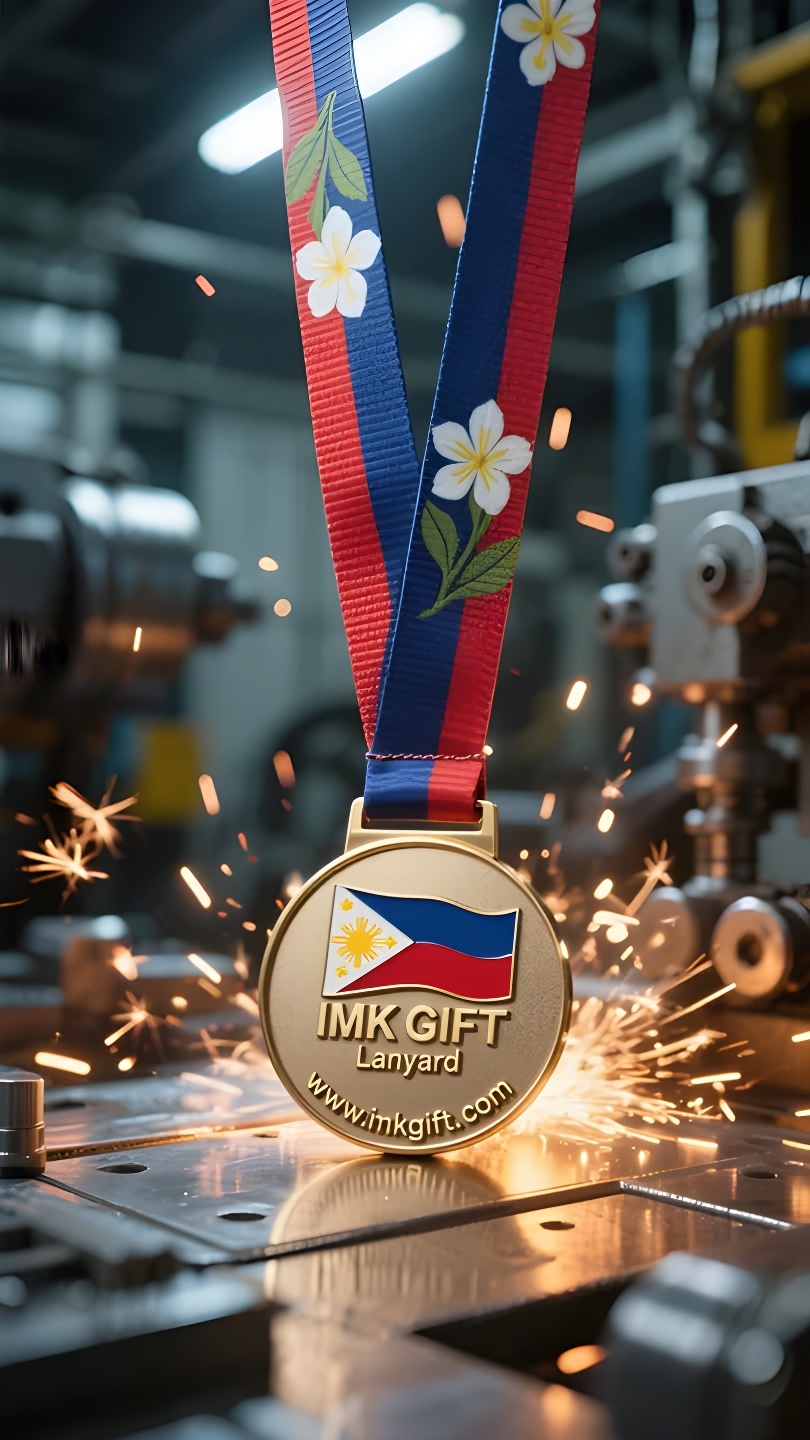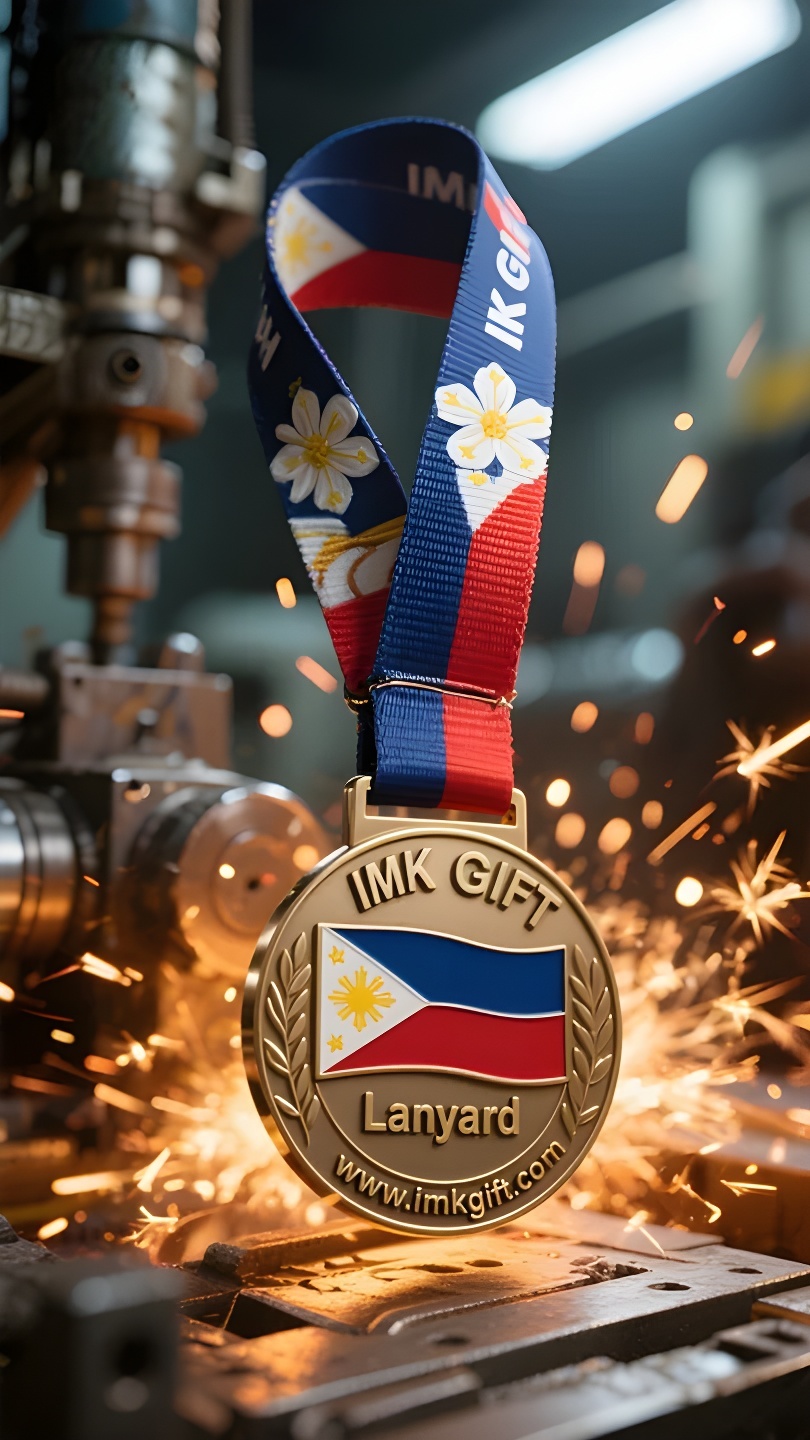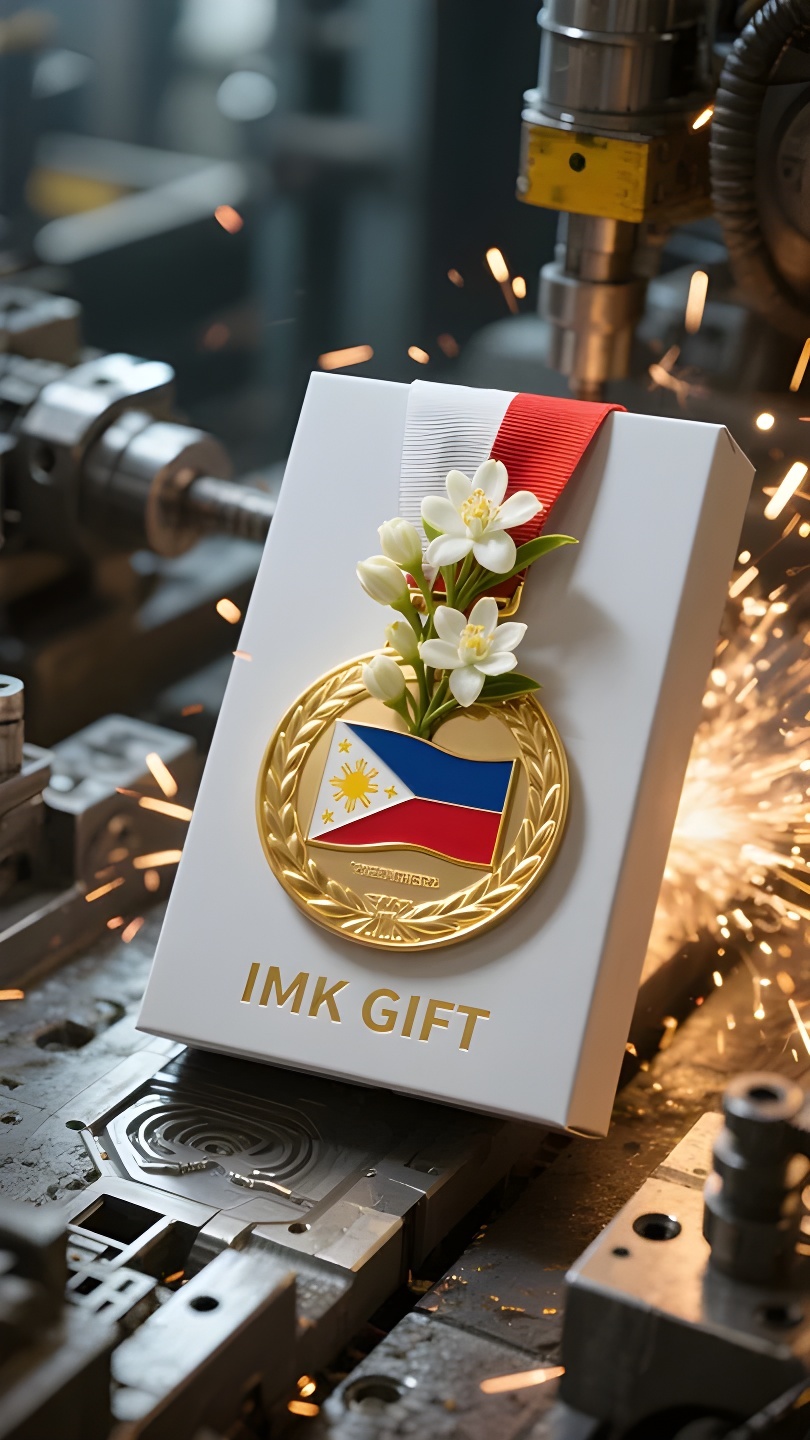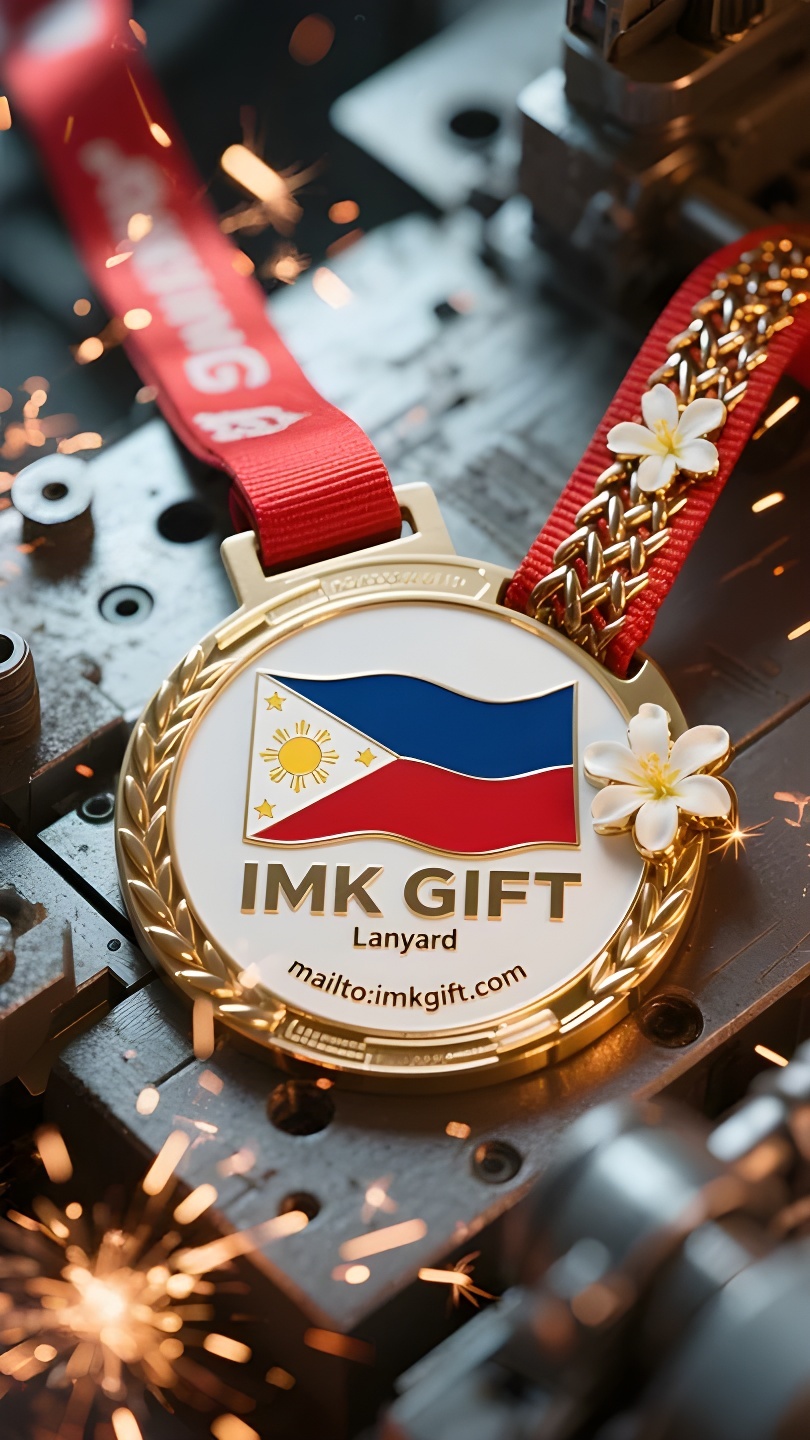in994-Ang-kaluwalhatiang-hinabi-ni-Jasmine-hinabi-ang-gulugod-ng-bansa-nang-may-katatagan
▼
Sa ilalim ng maliwanag na araw ng Hunyo sa Pilipinas, ang pula, asul at puting kulay ng pambansang watawat at ang ginintuang araw ay nagpupuno sa isa’t isa, tulad ng larawan ng buhay na hinabi ng mga tao sa kapuluan na ito nang may tapang, pag-asa at pagkakaisa. Ang jasmine flower lanyard medal na isinusuot sa dibdib ng mga Olympic athlete, kasama ang flexible woven pattern nito, ay nagsasalita ng pambansang espiritu na mas matibay kaysa sa metal. Ang puting tatsulok sa gitna ng pambansang watawat ay sumisimbolo sa walang hanggang paghahangad ng mga tao sa pagkakapantay-pantay at katarungan. Gumagamit ang jasmine lanyard ng eight-strand interlaced weaving technique upang gayahin ang karunungan ng tradisyonal na Philippine knots. Ang bawat thread ay tumatagal ng 168 oras upang habi-kamay, tulad ng pakikibaka ng bawat ordinaryong indibidwal – sa pamamagitan ng pang-araw-araw na pagtitiyaga, ang lakas na kasingnipis ng buhok ay maaaring baluktot sa kalaunan sa isang bono na nagdadala ng karangalan. Nang tumayo ang atleta sa podium na may hawak na medalya sa kanyang bibig, ang jasmine lanyard na kumikislap sa hangin ay parang pambansang bulaklak na namumukadkad pa sa unos, na sumasaksi sa tiyaga na lumalampas sa tagumpay o pagkatalo. Ang pilosopiyang ito ng paggamit ng lambot upang madaig ang katigasan ay matagal nang nakaukit sa mga pambansang gene. Noong panahon ng kolonyal na Espanyol, pinagtagpi ng mga rebelde ang lihim na katalinuhan sa mga garland na jasmine; noong Ikalawang Digmaang Pandaigdig, gumamit ang mga gerilya ng palm fiber sa paghabi ng mga network ng suplay. Ang Jasmine lanyard ngayon ay hindi lamang isang medalya para sa hindi mabilang na mga unsung heroes sa mahabang ilog ng kasaysayan, kundi isang espirituwal na totem para sa mga kontemporaryong mandirigma – ang tunay na kaluwalhatian ay hindi nakasalalay sa bigat ng medalya, ngunit sa kapangyarihan ng paghabi ng pag-asa na may isang nababaluktot na puso. Kapag ang bawat Pilipino ay naging hibla na humahabi sa gulugod ng bansa, ang bigkis na ito ay tatawid sa mga alon at makikita sa mundo ang ningning ng liwanag ng kapuluan.
Under the bright sunshine of June in the Philippines, the red, blue and white colors of the national flag and the golden sun complement each other, just like the life map woven by the people of this archipelago with courage, hope and unity. The jasmine lanyard medals worn on the chests of Olympic athletes are telling the national spirit that is more lasting than metal with their flexible weaving patterns. The white triangle in the center of the national flag symbolizes the people’s eternal pursuit of equality and justice, and the jasmine lanyard uses the eight-strand interlaced weaving process to reproduce the wisdom of traditional Philippine knots. Each silk thread has to go through 168 hours of hand-weaving, just like the struggle trajectory of every ordinary individual – in the day-to-day persistence, the power as thin as a hair can finally be twisted into a bond that carries honor. When the athlete bites the medal and stands on the podium, the jasmine lanyard fluttering in the wind is like the national flower that still blooms in the rainstorm, witnessing the tenacity that transcends victory and defeat. This philosophy of overcoming strength with softness has long been engraved into the national gene. During the Spanish colonial period, insurgents passed secret intelligence in jasmine garlands; during World War II, guerrillas used palm fiber to weave supply networks. Today, jasmine lanyards are not only medals of countless unknown heroes in the long river of history, but also spiritual totems for contemporary fighters. The real glory lies not in the weight of the medal, but in the power of weaving hope with a flexible heart. When every Filipino becomes the silk thread that weaves the backbone of the nation, this bond will eventually cross the waves and let the world see the brilliance of the light of the archipelago.
在菲律宾六月的艳阳下,国旗上的红蓝白三色与金色太阳交相辉映,恰如这片群岛人民用勇气、希望与团结织就的生命图谱。而佩戴在奥运健儿胸前的茉莉花挂绳奖牌,正以柔韧的编织纹路,诉说着比金属更恒久的民族精神。
国旗中央的白色三角形象征着人民对平等正义的永恒追求,茉莉挂绳则以八股交错的编织工艺,复刻着菲律宾传统绳结的智慧。每根丝线都要经历168小时手工编织,正如每个平凡个体的奋斗轨迹——在日复一日的坚持中,细若发丝的力量终能拧成承载荣誉的纽带。当运动员咬住奖牌站上领奖台,随风轻扬的茉莉挂绳,恰似暴雨中依然绽放的国花,见证着超越胜负的坚韧。
这种以柔克刚的哲学,早已刻进民族基因。西班牙殖民时期,起义者将秘密情报编入茉莉花环传递;二战期间,游击队员用棕榈纤维编织补给网络。今天的茉莉挂绳,既是历史长河里无数无名英雄的勋章,也是当代奋斗者的精神图腾——真正的荣耀不在于奖牌重量,而在于以柔韧之心编织希望的力量。当每个菲律宾人都成为编织民族脊梁的丝线,这纽带终将跨越波涛,让世界看见群岛之光的璀璨。
▼
Contact Us
📞 Tel: +0086-760-85286839
📧 Email: sales3@imkgift.com








